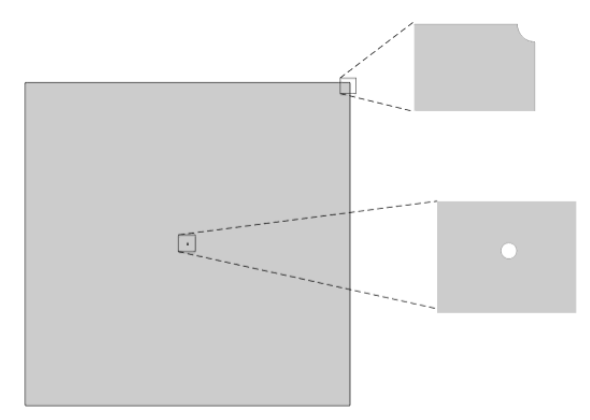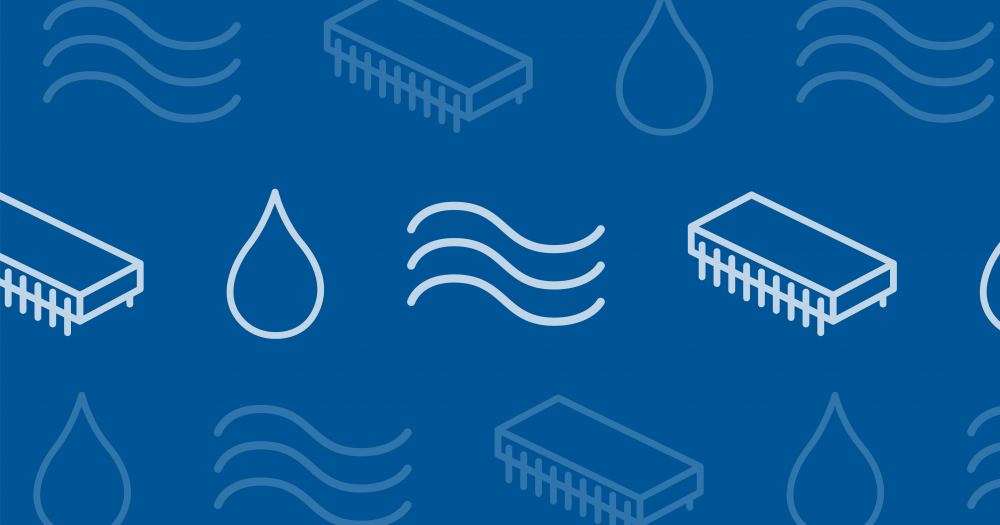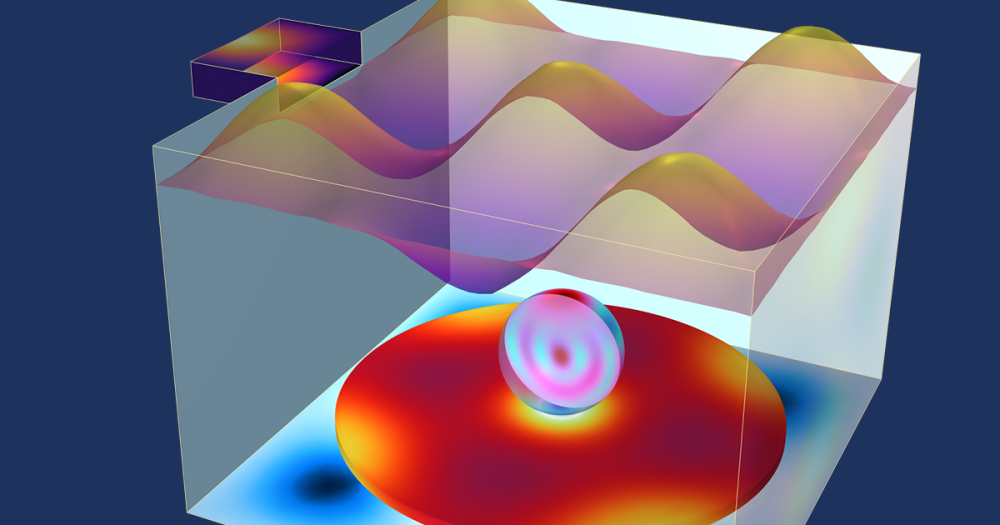
Around the world, trash is added to landfills at an increasingly rapid rate. Since these landfills take up large areas of land and can cause environmental issues, researchers are looking for safer, space-saving solutions. One option is to convert traditional anaerobic landfills into aerobic bioreactor landfills. This conversion process needs to be studied further, which could take years experimentally. For faster results, researchers at the University of Western Ontario used the COMSOL Multiphysics® software to efficiently analyze this process.
Taking a Closer Look at Landfills
As the human population grows, so too does the amount of trash we produce. In fact, the amount of solid waste we generate may almost double by 2025. A large portion of the waste ends up in landfills, some of which are the same size as entire towns. Land, however, is a finite resource and eventually there will be nowhere to put our trash. Furthermore, these growing landfills can negatively affect their surrounding environments.

A landfill. Image by Alan Levine — Own Work. Licensed under CC BY 2.0, via Flickr Creative Commons.
As an example, let’s look at a common type of landfill: a dry-tomb landfill. As its name suggests, this landfill entombs waste in order to keep out moisture, resulting in reduced microbial growth and activity. While dry-tomb landfills are generally cost effective, if moisture enters, it can cause a variety of issues. For instance, landfills produce methane, a greenhouse gas much more potent than carbon dioxide, due to the resulting microbial activity. In the United States, landfills are even the third largest source of methane emissions. Landfills can also generate a harmful leachate that, if not treated, seeps into the water table and causes environmental and health problems. For these reasons, researchers are investigating alternative landfill designs, one of which is the aerobic bioreactor landfill.
What Are Aerobic Bioreactor Landfills?
There are two types of bioreactor landfills that correspond to with and without free air, respectively: aerobic and anaerobic. Here, we’ll focus on aerobic bioreactor landfills, which push air and moisture into a landfill in order to enhance aerobic microbial activity. This, in turn, increases the biodegradation rate, accelerating waste decomposition and more rapidly creating space for additional trash. This method also minimizes hazardous leachate and methane production when compared to anaerobic landfills.
We can turn existing landfills into aerobic bioreactor landfills by injecting air and recirculating the leachate to create an even distribution of bacteria and nutrients. The resulting aerobic landfill needs to be continuously monitored to ensure that the oxygen and moisture levels are ideal for aerobic microbial decomposition. Without outside intervention, the oxygen supply will be too low to provide a sufficient amount of aerobic bacteria, creating a lethal anaerobic environment. The hazardous leachate that is produced as a result may poison groundwater and harm the surrounding environment.
Before implementing this conversion process, further analysis needs to be done. Research using physical experiments could take years before reaching conclusions. For a more time-effective method, researchers at the University of Western Ontario used simulation to analyze the conversion process.
Using Multiphysics Modeling to Study Bioreactor Landfills
For their study, the researchers modeled waste as a porous medium. They used both heat transfer and chemical reaction simulations to gain a better understanding of how aerobic landfills operate. With COMSOL Multiphysics, they were also able to include biological kinetic equations using distributed ordinary differential equations (ODEs).
The researchers created a 2D model, seen below, consisting of a 20 m by 20 m landfill cell with air injection wells at the corners and an extraction well at the center. With this model, the researchers studied how different key factors affected the landfill conversion process.

The landfill cell geometry. Image by Hecham M. Omar and Sohrab Rohani and taken from their COMSOL Conference 2015 Boston paper.
First, the team investigated the role of temperature in their simulations, using it as an indicator of successful biodegradation within the landfill. This is possible because aerobic biodegradation is exothermic, generating heat during the process. Therefore, when the landfill stays around ambient temperature, only minimal biodegradation occurs, whereas an increase in temperature indicates successful biodegradation.
It’s important to keep in mind that an increase in temperature is only beneficial in moderation. If the landfill isn’t monitored, the temperature will continue to rise and kill the aerobic bacteria. Thus, a major goal for researchers is to keep an aerobic bioreactor landfill at the perfect temperature, not too hot and not too cold.
With this in mind, the researchers investigated two methods for controlling the temperature:
- Increasing the airflow rate
- Increasing the leachate injection rate
For the first method, they increased the airflow rate fourfold. Instead of greatly decreasing the temperature, the air flowed farther into the waste before heating up to the waste’s temperature, and the cell temperature became more homogeneous due to convection.

The temperature after one day has passed for different airflow rates. The starting temperature for all three was 293 K. Images by Hecham M. Omar and Sohrab Rohani and taken from their COMSOL Conference 2015 Boston paper.
As for the second method, we see below that the temperature is significantly reduced by injecting leachate. This indicates that the leachate flow rate is more effective at controlling landfill temperature than the airflow rate. Here, leachate recirculation functions as a heat sink for the heat generated by the biomass, helping to ensure that the heat doesn’t reach unacceptable levels. Without this temperature-control method, the biomass would overheat and begin to die, reducing its concentration to almost zero and slowing the biodegradation process.

The temperature after one day has passed for different leachate injection rates. The starting temperature for all three was 293 K. Images by Hecham M. Omar and Sohrab Rohani and taken from their COMSOL Conference 2015 Boston paper.
Another factor affecting the conversion of anaerobic landfills to aerobic bioreactor landfills is the initial aerobic biomass concentration. In the following images, you can see how various biomass concentrations affect the temperature. When there is a low initial aerobic biomass concentration, the biomass grows slowly and produces less heat. On the other hand, when the initial biomass concentration gets too high, the aerobic bacteria grows too rapidly and produces a harmful amount of heat. From this, the researchers concluded that the initial aerobic biomass concentration was a key factor in the landfill conversion process.

The temperature after one day has passed for different initial aerobic biomass concentrations. The starting temperature for all three was 293 K. Images by Hecham M. Omar and Sohrab Rohani and taken from their COMSOL Conference 2015 Boston paper.
Next Steps Toward Building Better Landfills
With multiphysics modeling, the research team gained a better understanding of the factors that affect the aerobic landfill conversion process more quickly than they could have with experimental testing. Simulation also enabled them to study scenarios that would be difficult or impossible to study physically.
Although their model is consistent with both the researchers’ expectations and existing literature, the team notes that their model still needs to be validated against experimental and industrial data. Looking ahead, the aerobic bioreactor landfill design studied here can also be improved through other methods such as injecting aerobic sludge into the initial aerobic biomass concentration to help speed up the landfill conversion process.
More Resources on Studying Bioreactors and Porous Media with Simulation
- Check out the full COMSOL Conference paper: Transport Phenomena in the Conversion of an Anaerobic Landfill into an Aerobic Landfill
- Read these related blog posts:






Comments (0)